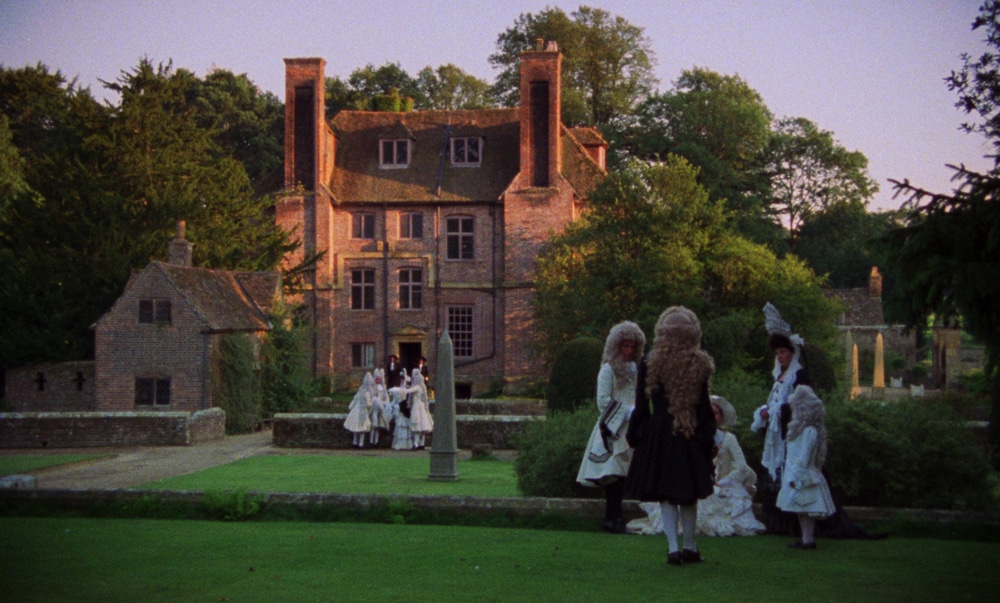





Dir: Peter Greenaway | Cast: Anthony Higgins, Janet Suzman, Anne-Louise Lambert. Hugh Fraser | UK Drama 108’
The Draughtsman’s Contract, a film that is now over forty years old, was made in the 1980s about events in 1694. Elaborate, stylised, enjoyable, spiteful and mysterious, a film in black, white and green. With sheep. Eminently enigmatic. Always associated with frames, so much so indeed that a framing device of the late 1600s is on hand to remind you that what is outside the frame is strictly irrelevant. The French newspapers described Peter Greenway as a cinematic dandy and the English, once they had passed their enthusiasm for being outside their comfort zone, slowly warmed to it. Shot on 16mm blown up to 35mm for cinema release, it surprised the art-cinema circuit and irritated some English cinematic luminaries to declare that filming in England was no longer tenable if such films were going to be made there henceforth.
Greenaway used a somewhat unorthodox filming procedure – being shot on super-16mm and enlarged to 35mm for cinema release. He was concerned that it should be seen as an English landscape film situated around a somewhat arcane proposition of “draw what you see and not what you know”. Your eyes must be solely your guide. He never expected it to be as successful on the art-cinema circuit. It’s a story about a “frame-up” both in metaphor and for real, and the film frame is unremittingly ubiquitous with the appearance of that late 17th-century framing device to remind you of the tyranny of the film frame. The French especially enjoyed it though a French newspaper said he was a cinematic dandy and the English newspapers, at first, until they settled on a more relaxed approach were appalled at its literary, theatrical, and visual pretensions.
The costumes by Sue Blane surprised and delighted audiences, so many layers, cuffs, tails and frills tailored to exhibit the body. When everyone wore white the Draughtsman was out of step and wore black. When everyone wore black the Draughtsman wore white, an arrangement to persistently demonstrate the artist being out of step manoeuvred by the wealthy establishment whose controls were out of reach however hard he tried to learn and catch up. The music by Michael Nyman surprised and excited and delighted everyone. Energetic often to a point of frenzy and exhibiting much irony.
When filming finally finished in the Groombridge Kent fields Greenaway claimed he wanted to start again, and wrote a sequel called The Hedgecutters about trimming boundaries. Since the draughtsman was too blinded, damaged and too dead to be resuscitated, the follow-up hero was to become his overdressed effete servant primed to die with cut extremities. But it didn’t work.
For a start the title was too mundane and too artisanal. It was winter and the vegetation was becoming leafless.
The next film titled a Zed and Two Noughts was calling. But Draughtman’s was truly an idyllic experience filmed in unusually persistent English summer weather that only collapsed when it finally broke and the characters appropriately began to complain in 1694 about the arrival of storms.
NOWON MUBI, BFI PLAYER